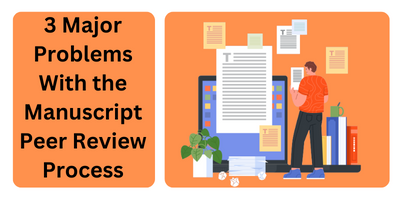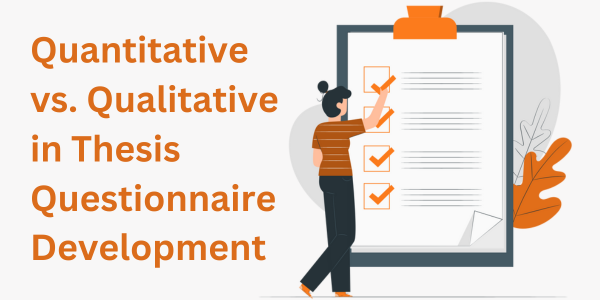 The Manuscript Peer Review Process plays a crucial role in the world of academic publishing, ensuring the quality and reliability of scientific research before it reaches the public. There are different types of Manuscript peer review, such as single-blind, double-blind, and open review, each with its own strengths and weaknesses. However, despite its significance, this process is not without its flaws. In this blog, we will delve into three major problems that can arise within the Manuscript Peer Review. By understanding these issues, we aim to shed light on the need for continuous improvement and innovation in this vital aspect of academic scholarship. Recognizing the Types of Manuscript review and comprehending the Importance of Manuscript Peer review is essential in addressing these challenges effectively.
The Manuscript Peer Review Process plays a crucial role in the world of academic publishing, ensuring the quality and reliability of scientific research before it reaches the public. There are different types of Manuscript peer review, such as single-blind, double-blind, and open review, each with its own strengths and weaknesses. However, despite its significance, this process is not without its flaws. In this blog, we will delve into three major problems that can arise within the Manuscript Peer Review. By understanding these issues, we aim to shed light on the need for continuous improvement and innovation in this vital aspect of academic scholarship. Recognizing the Types of Manuscript review and comprehending the Importance of Manuscript Peer review is essential in addressing these challenges effectively.
Before diving into the problems, let us know the types of Manuscript Review so that we can easily understand the importance of Manuscript Peer review, their problems and also their SOLUTIONS.
Types of Manuscript Peer Review
– Single-Blind Review:
In this type, the reviewers know the author’s identity, but the author remains unaware of who reviewed their manuscript.
– Double-Blind Review:
Both the author and the reviewers remain anonymous to each other. This aims to minimize potential biases in the evaluation process.
– Open Review:
This involves revealing the identities of both the author and the reviewers. It promotes transparency and accountability in the peer review process.
– Post-Publication Review:
Reviews are conducted after the manuscript is published, allowing for ongoing evaluation and feedback from the scientific community.
– Collaborative Review:
Multiple reviewers work together to assess the manuscript, providing a collective perspective on its quality and validity.
– Pre-Submission Review:
Feedback is obtained before formal submission, helping authors improve their work before undergoing the official peer review process.
Problem 1: Bias and Subjectivity
Problem:
Bias and subjectivity in the Manuscript Peer Review can lead to unfair evaluations and hinder the publication of high-quality research. Here’s how it poses a challenge:
– Unintentional Favoritism: Reviewers may unknowingly favor certain authors, institutions, or research topics, impacting the impartiality of the review.
– Inconsistent Judgments: Different reviewers may have varying opinions on the significance or novelty of a study, leading to inconsistent assessments.
– Potential for Prejudice: Personal beliefs or affiliations may influence a reviewer’s judgment, potentially leading to unfair rejections or acceptances.
Solution:
To address bias and subjectivity, several strategies can be implemented:
Implementing double-blind or even triple-blind review processes, where both the author and reviewers remain anonymous, can help mitigate biases related to author identity.
Ensuring a diverse pool of reviewers from different backgrounds and perspectives can help counteract potential biases and provide a more well-rounded evaluation.
Establishing clear and objective criteria for evaluating manuscripts can guide reviewers and reduce the impact of subjective judgments.
Providing training and specific guidelines to reviewers on how to recognize and avoid bias can help improve the quality and fairness of reviews.
Editors can monitor the performance of reviewers and provide feedback to address any observed biases or inconsistencies.
Introducing an appeals process allows authors to contest decisions based on potential bias, providing an additional layer of oversight.
Problem 2: Time-Consuming and Lengthy Delays
Problem:
The Manuscript Peer Review Process can often be time-consuming, causing significant delays in the dissemination of important research. Here’s why this poses a challenge:
Reviewers, who are also active researchers, may have limited time to dedicate to the review process, leading to delays in providing feedback. Coordinating schedules between authors, reviewers, and editors can lead to prolonged periods before a manuscript receives a thorough evaluation. Lengthy review times can result in a substantial gap between the completion of research and its eventual publication, slowing down the advancement of knowledge.
Solution:
To address the issue of time-consuming delays, several measures can be implemented:
– Set Clear Timelines: Editors should establish clear and reasonable timelines for each stage of the review process, ensuring timely evaluations.
– Efficient Communication: Encouraging prompt communication between authors, reviewers, and editors can expedite the review process and minimize delays.
– Prioritize Early-Stage Feedback: Providing initial feedback to authors at an early stage, even before formal peer review, can help address major issues upfront, saving time in the long run.
– Use Technology and Automation: Leveraging technology for tasks like manuscript tracking, reminders, and notifications can streamline the review process and reduce administrative delays.
– Assign Dedicated Editors: Having dedicated editors overseeing the review process can help ensure that reviews are conducted promptly and efficiently.
Problem 3: Inadequate Identification of Errors and Flaws
Problem:
The Manuscript Peer Review may not always catch all errors, methodological flaws, or inaccuracies in a manuscript. This poses a significant challenge:
Some mistakes or shortcomings in a manuscript may go unnoticed during the review process, potentially leading to the dissemination of flawed or unreliable research.
Reviewers may have varying expertise levels or may not have the specific knowledge needed to identify certain types of errors or flaws.
Errors may only come to light after the research has been published, potentially requiring corrections or retractions.
Solution:
To address the issue of inadequate error and flaw identification, several strategies can be put in place:
Ensuring that reviewers have a broad range of expertise relevant to the manuscript’s subject matter can help uncover a wider array of potential issues. Editors can emphasize the importance of thorough and detailed reviews, encouraging reviewers to carefully scrutinize all aspects of the manuscript. Employing plagiarism detection software and other digital tools can help identify potential issues, such as duplication or data fabrication. Implementing mechanisms for post-publication monitoring and correction, such as a system for errata or retractions, can address any errors that emerge after publication. Providing ongoing training and resources for reviewers can enhance their ability to identify and address potential errors and flaws.
Conclusion
In conclusion, the Manuscript Peer Review Process, a cornerstone of academic publishing, plays a pivotal role in upholding the quality and credibility of scientific research. While the various Types of Manuscript peer review offer different approaches to evaluation, they are not without their challenges. The issues of bias and subjectivity, time-consuming delays, and the potential for inadequate error identification highlight areas for improvement. Recognizing these hurdles is crucial in ensuring that the Importance of Manuscript Peer review is maximized. By implementing strategies like blind reviews, clear timelines, and diverse reviewer expertise, we can work towards a more efficient and equitable peer review process. This will not only enhance the reliability of published research but also accelerate the advancement of knowledge in the scientific community.
Authenu.com is a website that provides manuscript peer review services to PhD students. Peer review is an essential process that ensures the quality of research papers before they are published in academic journals. Authenu.com’s peer review service is designed to help students improve the quality and relevance of their work for their target journal. The service includes a thorough analysis of research questions, formulated hypotheses, and the significance of the study. The peer reviewers also evaluate the factual accuracy, correct usage of tests and experiments, appropriate methodology and analysis, and apt conclusion. They also check aspects like grammar, vocabulary, content structure, and presentation of logical content within the context of the rules and standards defined by your chosen journal. Authenu.com’s peer reviewers offer constructive feedback that helps students improve upon their already done hard work. This lets students submit a suitable paper oriented towards their target readers.
FAQ Questions
1. What are the key elements of manuscript peer review?
The key elements of manuscript peer review include evaluation by experts in the field, feedback on methodology, analysis, and interpretation, and recommendations for improvement.
2. What are the advantages and disadvantages of manuscript peer review?
The advantages of manuscript peer review include quality assurance, validation of research findings, and improvement of manuscript quality. Disadvantages can include potential bias, lengthy review times, and the possibility of errors going unnoticed.
3. What are the main aims of doing manuscript peer review?
The main aims of doing manuscript peer review are to ensure the reliability and credibility of research, provide constructive feedback to authors for improvement, and determine if a manuscript is suitable for publication.
4. What is the manuscript peer review format?
The manuscript peer review format typically involves a structured assessment of the introduction, methodology, results, discussion, and conclusion sections, along with comments and recommendations for the authors.
